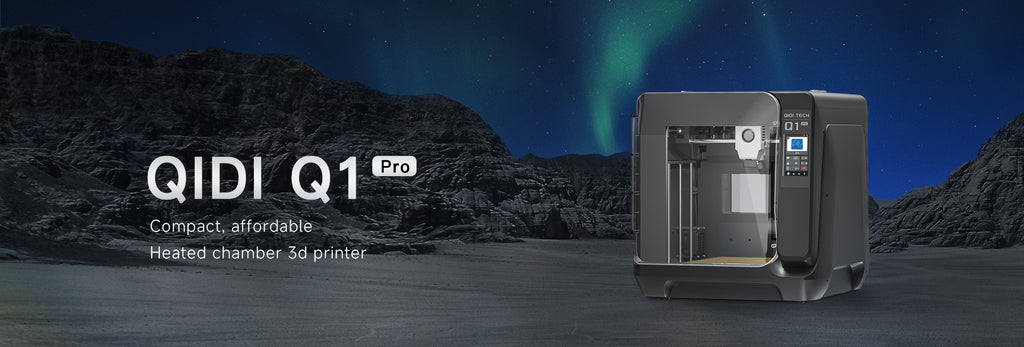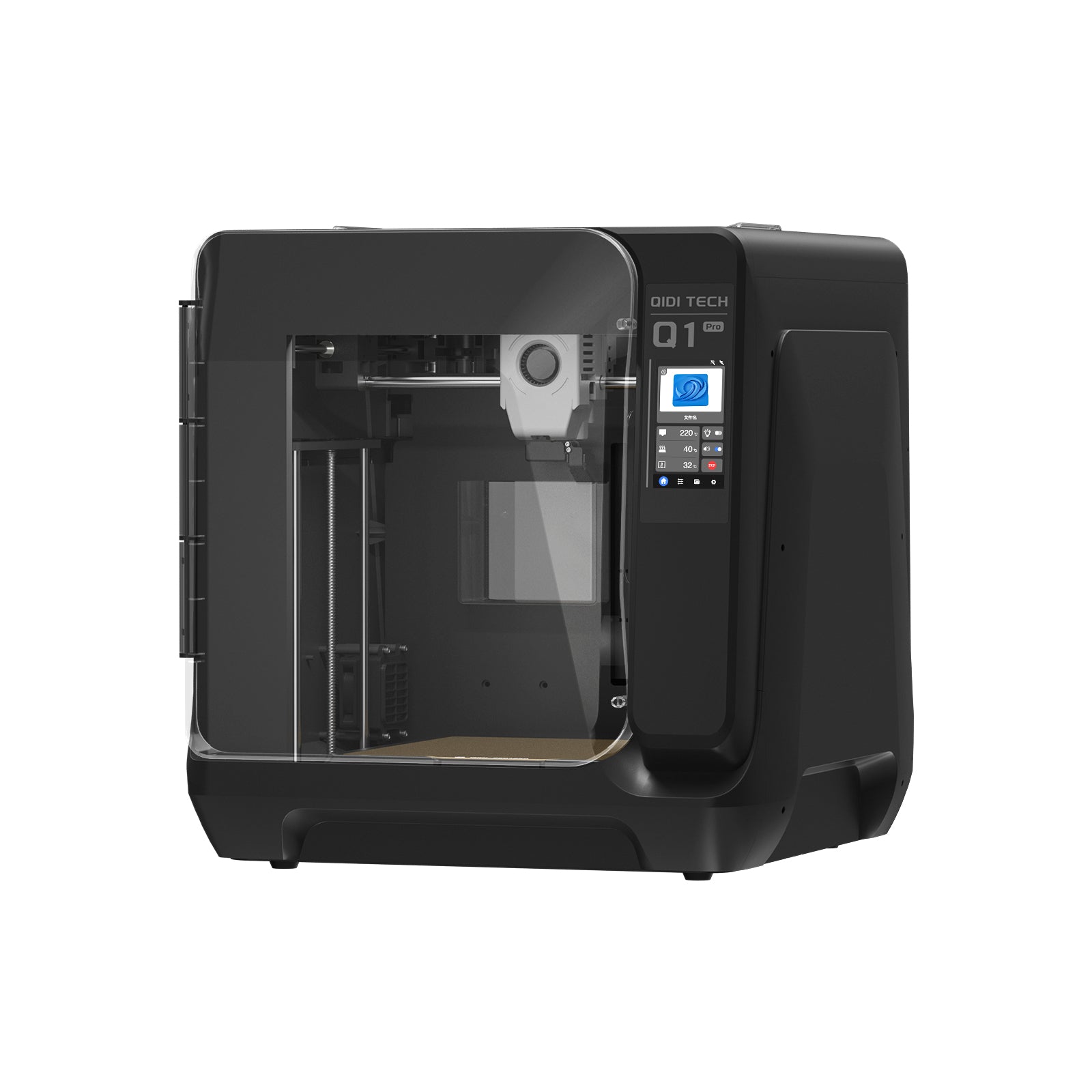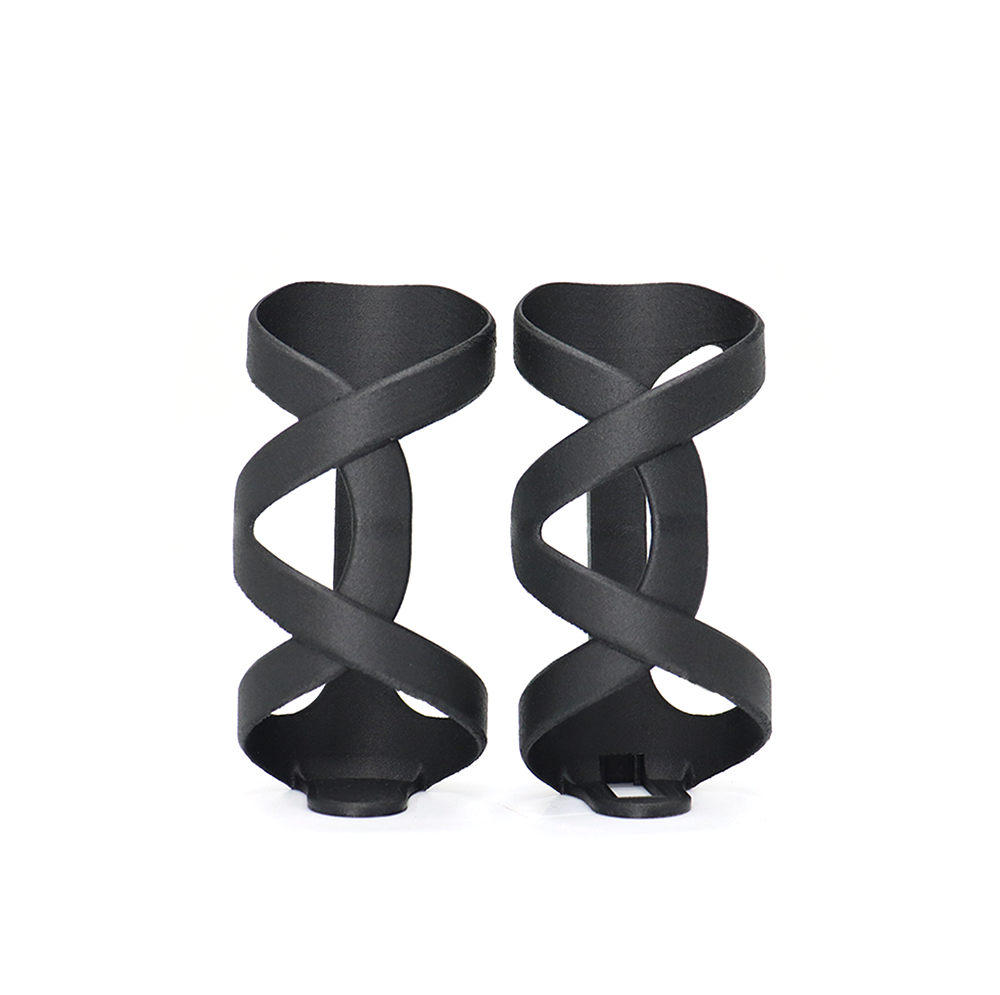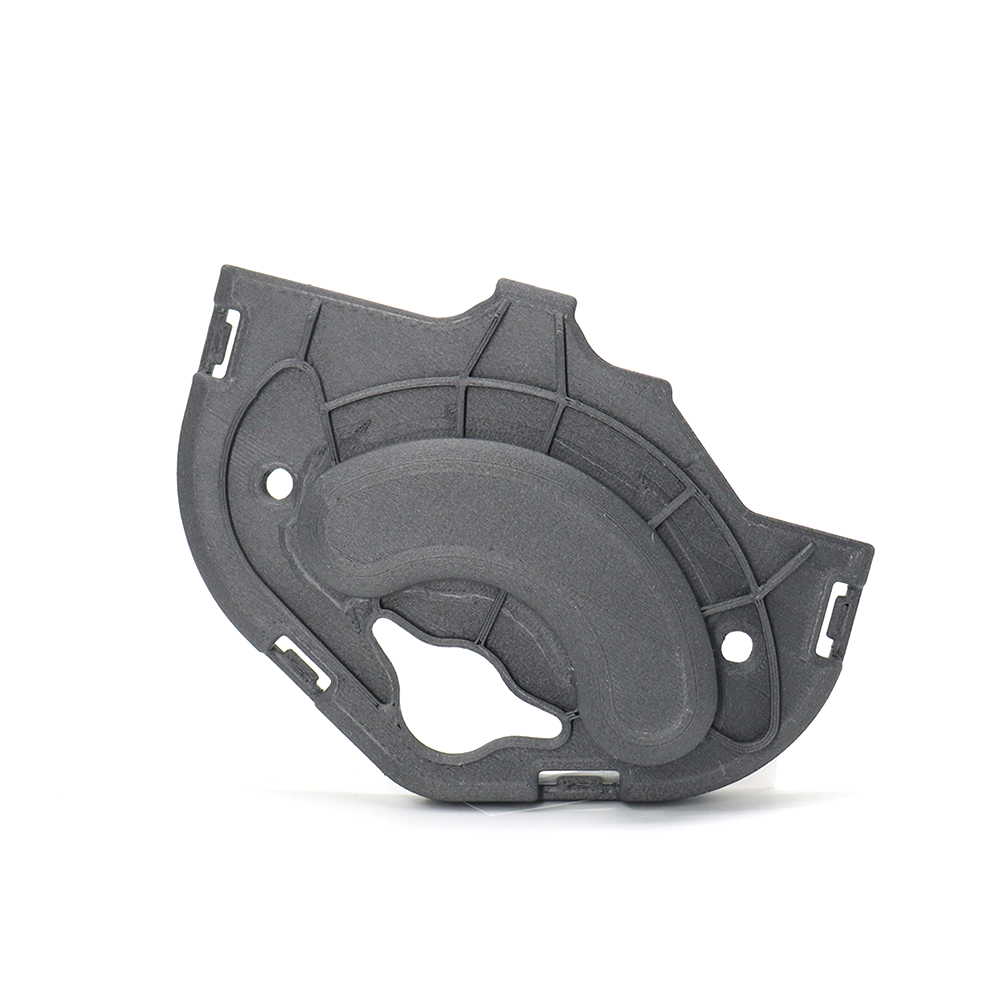Is It Worth Investing in a 3D Printer?
Table of Contents
- Advantages of Owning a 3D Printer
- Challenges of Owning a 3D Printer
- Everyday Uses for Your 3D Printer
- Essential Factors to Consider When Choosing Your 3D Printer
- Is a 3D Printer a Smart Investment for You?
- TwoRecommended 3D Printers: QIDI Tech's Q1 Pro and X-Max3
- Make Your Ideas Real with 3D Printing
- Read More
The allure of creating physical objects from digital designs has made 3D printing a hot topic in recent years. As prices drop and capabilities expand, many are considering adding these innovative machines to their homes or workspaces. But is a 3D printer worth the investment? This guide examines the pros and cons, practical applications, and key factors to consider before buying. We'll explore the true costs, creative potential, and real-world uses of 3D printers, helping you decide if this technology aligns with your needs and goals.
Advantages of Owning a 3D Printer
Owning a 3D printer can revolutionize the way you create, design, and produce objects. From hobbyists to small business owners, 3D printers offer a range of benefits that can enhance creativity and productivity.
1. Create Complex, Custom Designs
3D printers allow you to make unique and intricate objects. These machines can produce shapes that are difficult or impossible to make with traditional methods. You can create anything from detailed jewelry to custom-fit prosthetics, turning your ideas into real objects with great accuracy.

2. Speed Up Product Development
3D printing makes creating prototypes much faster. Designers and engineers can quickly turn their ideas into physical models. This speed allows for rapid testing and improvement of designs. As a result, new products can be developed more quickly and at a lower cost.
3. Save Money on Small Production Runs
For making small numbers of items, 3D printing can be cheaper than traditional manufacturing. You don't need expensive molds or special tools. This makes it affordable to produce small batches of products. It's especially useful for startups, artists, and businesses serving niche markets.
4. Less Waste, More Efficiency
Unlike traditional methods that cut away material, 3D printing adds material layer by layer. It uses only what's needed to make the object. This approach creates less waste, making 3D printing a more environmentally friendly option for many projects.
5. Make Production More Accessible
3D printing has made manufacturing available to more people. Individuals and small businesses can now produce high-quality prototypes and products without needing large factories. This technology allows inventors, designers, and entrepreneurs to bring their ideas to life more easily than ever before.
Challenges of Owning a 3D Printer
While 3D printers offer exciting possibilities, they come with some drawbacks. It's important to consider these challenges before making your purchase.
1.Material Limitations
3D printed objects are often less durable than traditionally manufactured items. The plastics used in home printers may not be suitable for heavy-duty applications.
2.Not Ideal for Mass Production
For large quantities, 3D printing is slower and less efficient than traditional manufacturing methods. It's best suited for small batches or unique items.
3.Size and Detail Constraints
Home 3D printers have limits on object size and may struggle with very fine details. Your creations are restricted by the printer's build area and resolution capabilities.
4.Post-Processing Requirements
Many 3D printed objects need finishing work, such as removing support structures or sanding rough edges. This extra step can be time-consuming.
5.Learning Curve and Ongoing Costs
Using a 3D printer effectively requires learning about materials, settings, and design software. Additionally, you'll need to factor in the cost of materials and potential replacement parts over time.
Everyday Uses for Your 3D Printer
3D printers open up a world of creative possibilities. Here are some exciting ways you can use this technology in your everyday life.
1. Design Your Own Statement Jewelry
Transform your accessory collection with custom-made pieces. Create bold geometric earrings that catch the eye, or design a pendant necklace that tells your personal story. With 3D printing, you can experiment with unique shapes and sizes that aren't available in stores.
2. Craft Eye-Catching Home Decor
Spruce up your living space with one-of-a-kind decorative items. Print a modern, abstract vase for your coffee table or design quirky bookends that reflect your personality. For a special touch, create personalized photo frames or custom wall art that perfectly matches your home's style.
3. Create Your Own Custom Collectibles
Bring your favorite fictional characters to life. Print detailed figurines from your beloved movies or video games. Create a mini Millennium Falcon from Star Wars, or design a set of Pokemon creatures. These unique models make great display pieces or gifts for fellow fans.
4. Print Smart Solutions for Household Organization
Tackle clutter with custom-designed organizers. Create a perfectly-sized utensil tray for your kitchen drawers, or design a modular desk organizer that fits your specific needs. With 3D printing, you can solve storage problems in ways that off-the-shelf products can't match.
5. Make Learning Tangible with 3D Printed Educational Tools
Enhance the learning experience with hands-on educational aids. Print a scaled model of the solar system for astronomy lessons, or create tactile alphabet blocks for young learners. These custom educational tools can make complex concepts easier to grasp and remember.

These projects show how a 3D printer can add value to various aspects of your life. Whether you're expressing your creativity, solving everyday problems, or finding new ways to learn, 3D printing offers unique solutions tailored to your needs.
Essential Factors to Consider When Choosing Your 3D Printer
Before you buy a 3D printer, it's important to consider these factors to ensure you get the right one for your needs.
- Print Size: Think about what you want to make. If you're printing small figurines, you don't need a huge printer. But if you want to make bigger items, look for a printer with a larger build area.
- Print Quality: Higher resolution means finer details, but it often means slower printing. Decide if you need super-detailed prints or if faster, slightly less detailed prints are okay for your projects.
- Materials: Different printers use different materials. Some only use basic plastics, while others can handle more advanced materials. Make sure the printer can use the materials you're interested in.
- Ease of Use: Some printers are almost ready to use out of the box, while others need a lot of setup. If you're not very tech-savvy, look for a printer that's easy to set up and use.
- Software: The software you use to prepare your prints is important. Look for printers that work with easy-to-use software, especially if you're a beginner.
- Cost: Consider both the initial cost of the printer and the ongoing costs for materials and maintenance. Sometimes a cheaper printer can end up costing more in the long run.If you're on a tight budget, you might want to read our article on Should I Buy a Cheap 3D Printer for more insights.
- Support: Look for printers with good customer support and active user communities. This can be really helpful when you need advice or run into problems.
The best 3d printer for you is one that you'll enjoy using and that can make the things you want to create.

Is a 3D Printer a Smart Investment for You?
Yes, for many users, a 3D printer is a smart investment. Here's why:
Initial Costs: $500 to $900 to Get Started
A good home 3D printer costs between $400 and $800, with about $100 for accessories. Ongoing costs are reasonable: $30-$50 for a spool of filament that makes many objects, $50 yearly for maintenance, and low electricity use.
Cost Savings: Up to $400 Annually on Household Items
Printing a custom phone case costs $5 compared to $20-$40 to buy. A decorative vase costs $3 to print versus $15-$30 to purchase. Small parts like drawer knobs cost cents to print instead of $5-$10 to buy. If you print 20 $20-items a year, you'll save $400.
Earning Potential: $1,200+ Yearly from Selling Prints
You can sell custom figurines for $15-$20 that cost $3 to print, or personalized jewelry for $10-$15 that costs $1 to make. Selling just 10 items monthly at $10 profit each could earn you $1,200 a year.
Long-Term Value: $4,000 Net Benefit Over 3 Years
Over three years, you might spend $800 total on your printer, materials, and maintenance. But you could save $1,200 by not buying items and potentially earn $3,600 from sales. That's a $4,000 benefit, plus the value of unique items and new skills.
TwoRecommended 3D Printers: QIDI Tech's Q1 Pro and X-Max3
QIDI Tech offers two great 3D printers for different needs and budgets. Let's look at the Q1 Pro and X-Max3 to see which might be right for you.
1.QIDI Q1 Pro: Fast and Smart Printing on a Budget
The Q1 Pro, priced at $449, is perfect for beginners and hobbyists who want high-quality prints without spending too much.
- Fast printing: It can print at speeds up to 600 mm/s, so your projects finish quickly.
- Smart setup: The printer levels itself and warns you if you're running out of material.
- Versatile: It can use many types of printing materials, thanks to its hot end that reaches 350°C.
The Q1 Pro is a great choice if you're new to 3D printing or don't have much space. It's easy to use but still has advanced features.

2.QIDI X-Max 3: Big Projects, Better Quality
For those who need more space and better print quality, the X-Max 3, priced at $799, is worth considering.
- Large print area: At 325 x 325 x 315 mm, you can print bigger objects or multiple items at once.
- Stable printing: Its metal frame keeps the printer steady, even during fast prints.
- Better print quality: A heated chamber up to 65°C helps prevent warping and failed prints.
- Clean air: It has a built-in air filter, great for home or office use.
The X-Max 3 is ideal if you plan to print large items or need high-quality results for professional projects.
Both printers are ready to use out of the box, so you can start printing right away. The Q1 Pro is best for beginners or those with limited space, while the X-Max3 is better for more serious users or those with bigger projects in mind.

Make Your Ideas Real with 3D Printing
3D printing opens up a world of possibilities, from creative projects to potential cost savings. The QIDI Q1 Pro and X-Max3 offer options for different needs and budgets. Consider how you might use a 3D printer - for hobbies, home solutions, or even a small business. Weigh the costs against the benefits, and think about the skills you'd like to develop. If you're excited about bringing your ideas to life or solving unique problems, 3D printing could be a rewarding investment. Why not explore further and see if it's the right fit for you?





